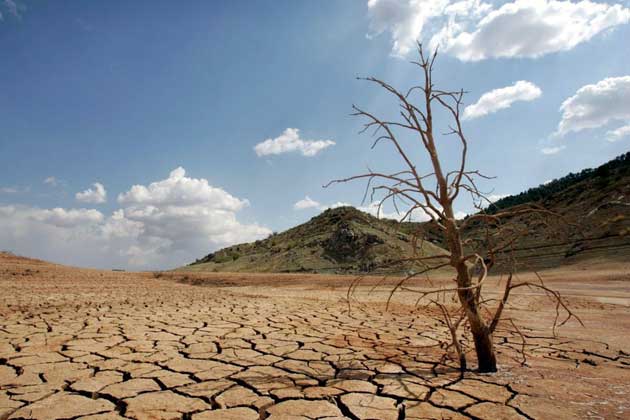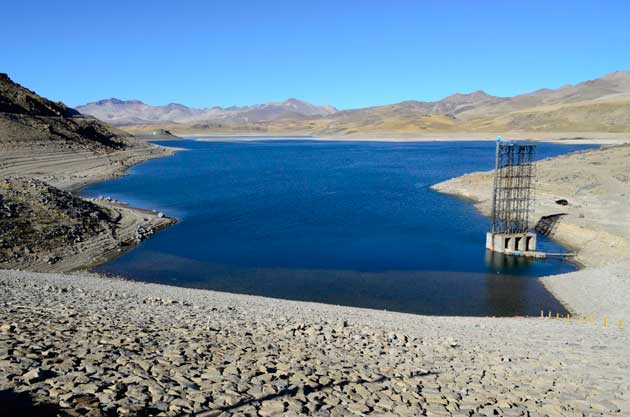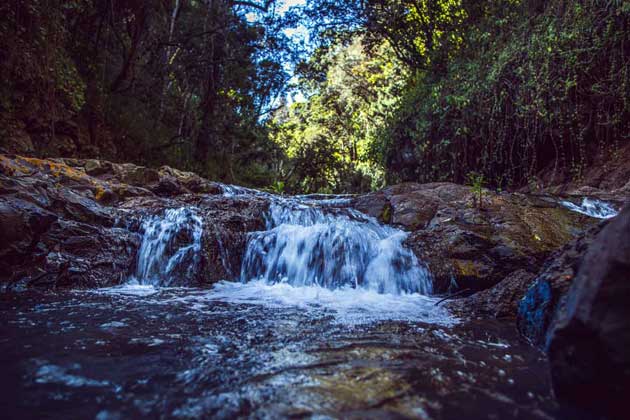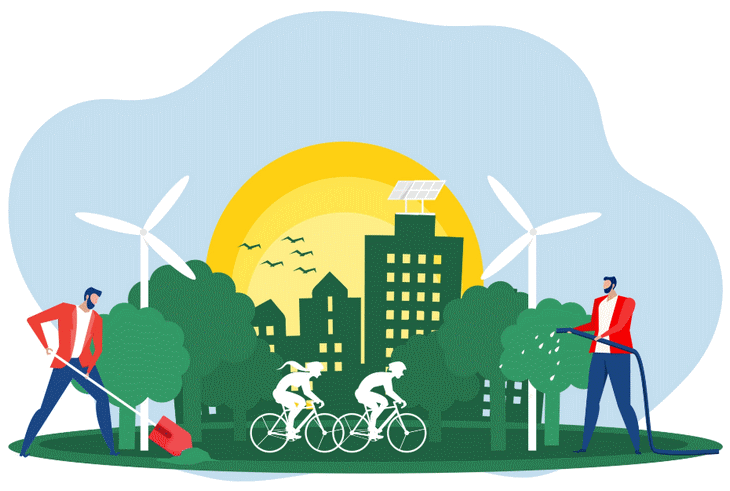Water security.. Protecting water at the source
Chile owns two-thirds of Latin America's glaciers, but the quality and quantity of its water are becoming more problematic by the day.
This is especially true in Chile's Mediterranean ecoregion, home to the capital Santiago, which scientists have identified as one of the 25 Latin American cities where water security is most at risk.
Nature, mining, agriculture and urban expansion are fighting for increasingly scarce water.

Communities in and around Santiago are rediscovering nature as a solution to the looming water shortage as the dry southern summer approaches. More than 40 percent of Chile's 19.5 million people live in the capital, and drinking water is becoming increasingly scarce.
The city and its surrounding metropolitan region rely heavily on the Maipo River, which runs 250 kilometers from the Andes Mountains to the Pacific Ocean. However, the Maipo ranks ninth in a list of 18 rivers worldwide at risk of drying up, and is the only South American river so labeled.
On top of that, Chile is suffering from an unprecedented drought that has persisted for 15 years, caused by climate change and phenomena such as El Niño and La Niña. As the hot and drier southern summer approaches, authorities are brooding on contingency plans.
In Santiago and the surrounding region, 72 percent of groundwater wells are steadily declining. The difference between available supply and demand is currently 63.5 cubic meters per second and will increase to 92.1 cubic meters per second by 2050.
Focus on nature to address water crisis
Miyawaki method
In the rural municipality of María Pinto, 40 kilometers from downtown Santiago, the technique of Japanese botanist Akira Miyawaki is being successfully implemented. This method can accelerate the growth of native forests by a factor of ten. Forests improve water infiltration and act as fog traps, preventing rainwater from draining away quickly.
This Japanese method focuses on natural vegetation that would grow without human intervention. Maria José Valenzuela, environmental director of the municipality, explained that the restoration project covers seven hectares and is supported by numerous volunteers from the Liceo Polivalente, a municipal high school.
The project is a kind of forest laboratory where the Miyawaki technique is being used as a model for restoring remaining forests in central Chile. Of interest are tree species with leaves that can withstand drought, because global warming is already being felt in the municipality, according to Valenzuela.
In Chile, more than 60 percent of water resources are consumed by agriculture. The agroexport sector there grew rapidly without too much regulation. "But many farms do monoculture, with avocados or fruit trees, and leave the landscape as a barren desert after they use up the water resources. Consequently, the land is infertile due to the use of chemicals," said Valenzuela, a civil engineer specializing in sustainability and social ecology.
Ecological restoration in Curacaví
In the rural municipality of Curacaví, with its 33,000 inhabitants 53 kilometers from Santiago, the community joined forces in 2018 to restore 14 hectares of a hillside that had been used as a landfill. After a fire, residents removed 50 tons of waste in January of that year and organized a reforestation initiative there, planting five thousand native trees so far.
Fabian Guerrero, director of the park, said a Miyawaki forest is being prepared with native species planted at a high density and in a small space.
"We are using drip and sprinkler irrigation techniques to use water efficiently," he said. In the park there are organic gardens, compost bins, walking paths and tours for students and families in which we teach which trees should be planted, where they thrive best, which ones provide more shade or can withstand the sun," he explains.

Pro-water initiatives in San Joaquín
San Joaquín, a municipality of 94,000 inhabitants southwest of Santiago, is one of the poorest municipalities in the metropolitan region. Several water projects are being drawn up there and two parks are being protected, while a third park, called the Víctor Jara Flood Park, will be completed in 2025.
"This park is located along a canal that has long been a burden on Santiago because of industrial discharges and unpleasant odors," recalls environmental engineer Claudia Silva, who is in charge of environmental management and control in San Joaquín.
The Flood Park is designed to collect and retain rainwater during heavy rainfall. It includes a pond and plantings resistant to flooding.
A rain garden was created in Mataveri, a street that flooded every time it rained. This involves removing stones to drain water to plantings. Permeable pavement was also installed to capture rainwater and facilitate infiltration.
Prioritizing green solutions
Water Scenarios 2030 also shows that a fragmentation of the governance process, with more than 52 national institutions involved in water management, is a factor that has contributed to the water crisis.
"Our vision is that we need to move to nature-based solutions," said Diaz of Fundación Chile. "This includes conservation, restoration and protection of the ecosystems that are part of the water cycle, such as wetlands and native trees. This will have a greater impact on the water supply, in less time and at a lower cost."
According to the specialist, it is essential to first introduce nature-based solutions and then reduce water consumption. Among other things, agriculture can be more efficient. He also says the use of treated wastewater or desalination is among the possibilities. "But solutions based on nature conservation could already solve half the problem," he concludes.

Reference(s) .. Various Resources
